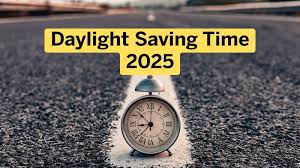Understanding Daylight Saving Time 2025

Introduction to Daylight Saving Time
Daylight Saving Time (DST) is a practice where clocks are set forward by one hour during the warmer months to extend evening daylight. While it was first widely implemented during World War I to save energy, its relevance continues to spark debate today. As the world approaches 2025, the discussion around DST gains prominence due to its potential effects on daily life, energy consumption, and health.
Current Trends and Changes
In 2025, Daylight Saving Time is expected to begin on March 9 and end on November 2 in many regions of the United States, with similar practices in European nations starting on March 30 and concluding on October 26. However, several areas, including Arizona and Hawaii, still opt out of this practice due to its perceived drawbacks. Notably, states like Florida and California have legislated to remain in Daylight Saving Time permanently, which raises questions on uniformity in timekeeping practices.
Impact on Energy and Health
The primary objective behind DST is to conserve energy by making better use of daylight. Recent studies reveal mixed results—while some energy savings are realized, the effect diminishes as energy consumption patterns change. Additionally, the transition can adversely affect health, disrupting sleep cycles and routine, increasing the risk of heart attacks, strokes, and accidents immediately following the clock change. Experts recommend strategies to mitigate these health risks, especially as more regions consider permanent time changes to alleviate these issues.
Public Sentiment and Future Outlook
Public opinion on Daylight Saving Time is divided. Surveys indicate a growing number of individuals favor abolishing the practice altogether, citing the inconvenience of adjusting clocks and the negative health impacts. As 2025 approaches, lawmakers across various states and countries may be prompted to reconsider the long-term viability and relevance of DST. If trends continue, we may see legislative changes in favor of a standardized time system that aligns better with modern lifestyles.
Conclusion
As we move towards 2025, the implications of Daylight Saving Time on our lives demand attention. Energy conservation, health concerns, and public sentiment play crucial roles in shaping the future of this age-old practice. Understanding these factors will help communities make informed decisions as they navigate the complexities of timekeeping in an ever-evolving world.









